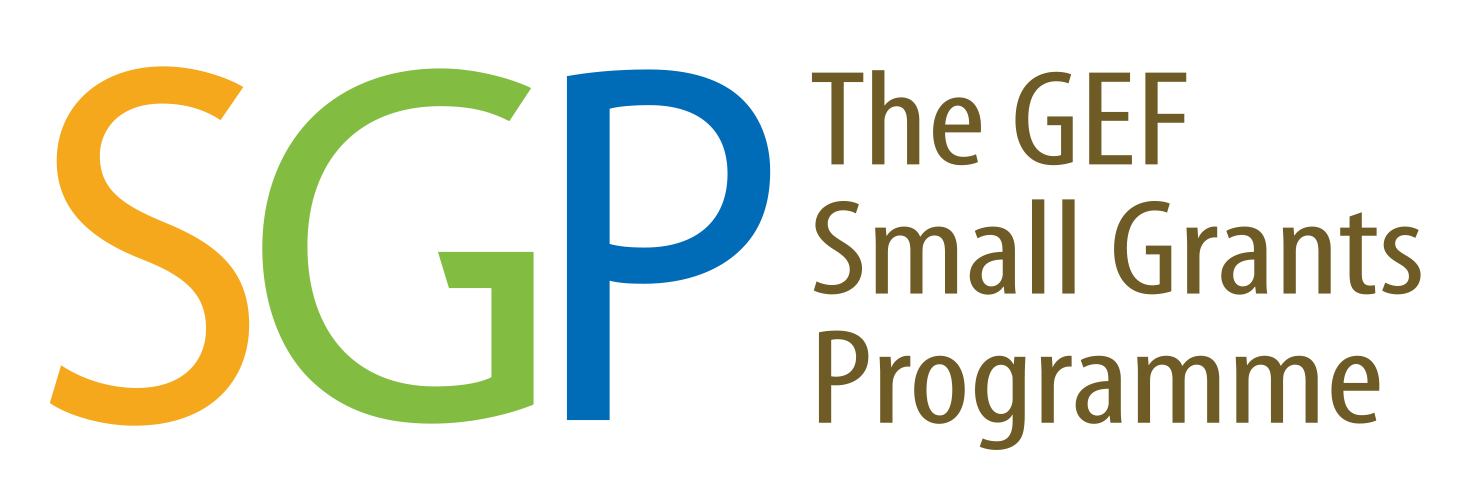Hail the Whale
Sustaining marine life in Cameroon
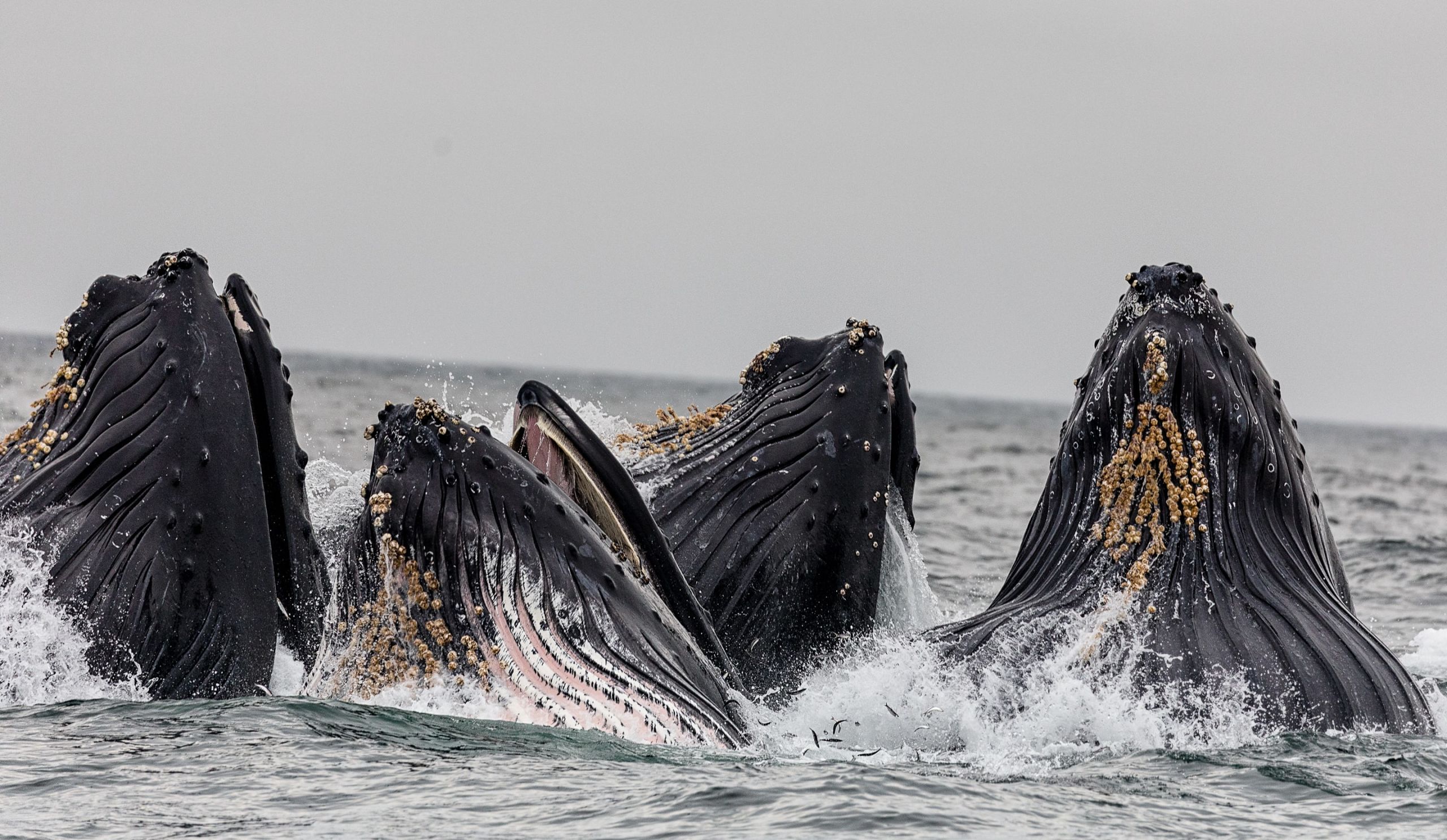
World Wildlife Day is an opportunity to celebrate the many beautiful and varied forms of wild fauna and flora and to raise awareness of the multitude of benefits that their conservation provides to people.
With the theme of “sustaining all life on earth", we acknowledge and celebrate the important work that communities around the world are doing to protect marine life.

On the Southern Cameroon coastline from Kribi town to the border with Equatorial Guinea, with a bit of luck you can spot Humpback whales, Sperm whales, many types of dolphins, and African Manatees.
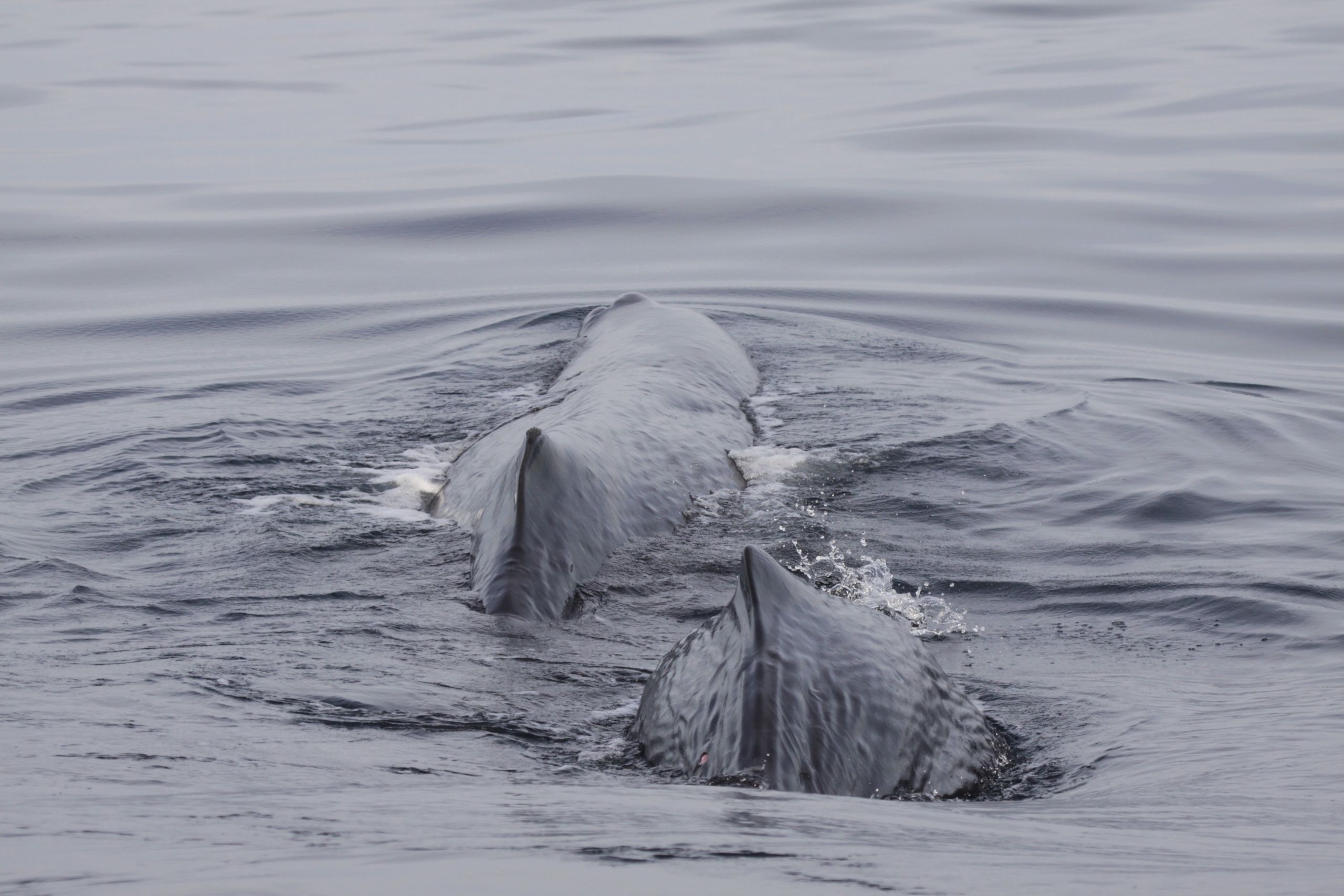
However, for this diverse marine life, there is limited data available - and correspondingly limited protection.
Knowing that good data can serve as an evidence base for informed environmental policies, the Cameroonian Association of Marine Biology (ACBM) began monitoring this diverse marine life.
ACBM worked to collect baseline data – and to understand and respond to the varied threats they face.
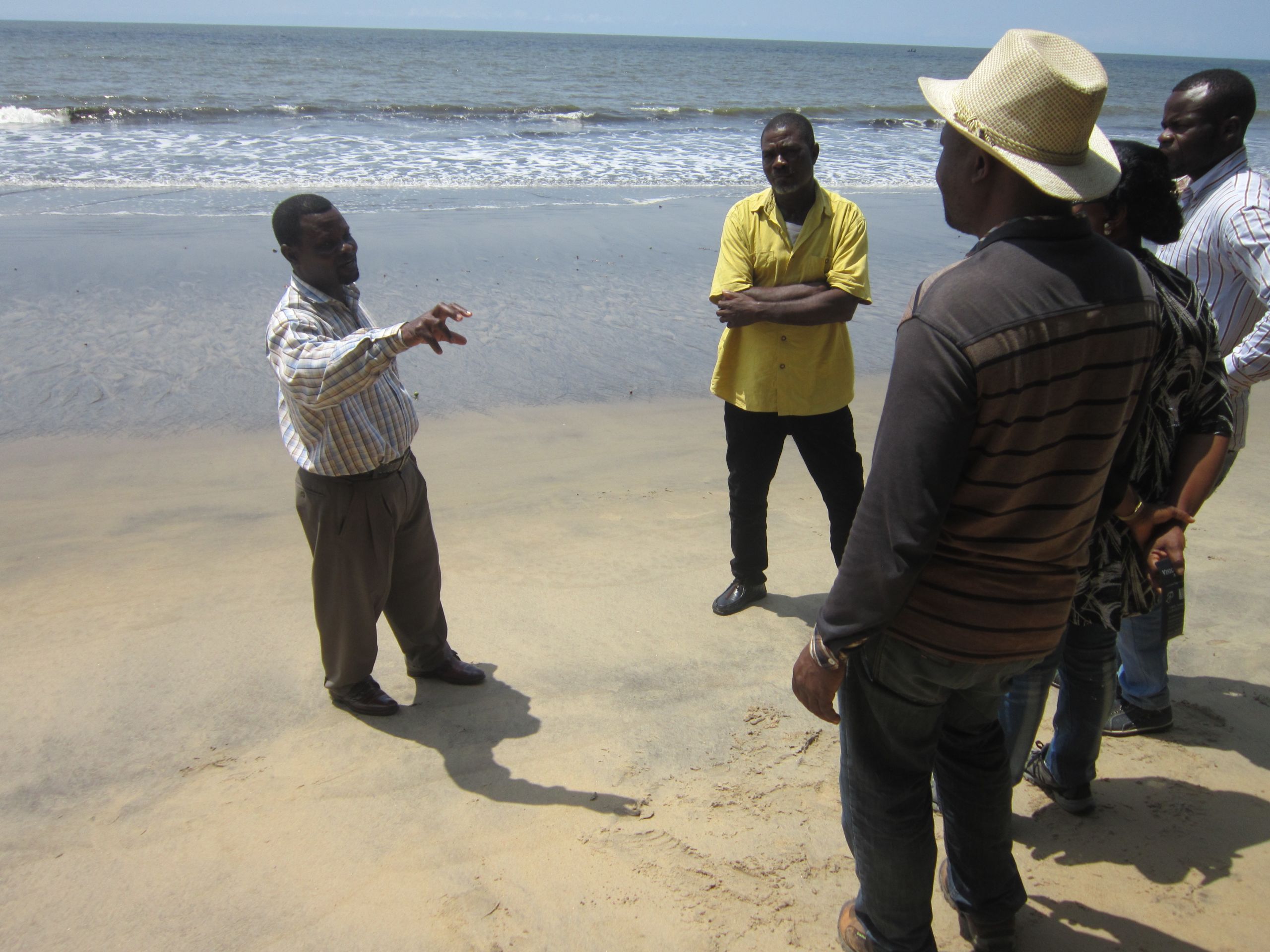
After 119 years of absence, 2011 marked the rediscovery of the humpback dolphin. This species was observed in Cameroon in 1892, but there were no further confirmed sightings until a group of 12 animals was observed around Bouandjo in 2011.
At present, the project team’s monitoring in the area confirms a local herd of about 25 to 30 individuals. This herd is complemented by two smaller herds of between 4 and 10 individuals near the mouth of Nyong, and around Londji near the town of Kribi.
In 2016, with the support of the Global Environment Facility's (GEF) Small Grants Programme (SGP), implemented by UNDP, ACBM established a collaborative team comprised of researchers, civil society volunteers, university students, and representatives from local populations working together to prepare inventories of dolphins and whales.
In particular, ACBM worked to gather data on local cetacean species, build ecotourism projects with local stakeholders, and to propose marine protected areas in Cameroon.


Human impacts on the world’s oceans are extensive and varied, warranting urgent and comprehensive global management of marine resources.
Marine fisheries are the primary source of dietary protein for billions of people, and globally are a major anthropogenic influence on worldwide marine systems, affecting marine animal populations and the functioning of the wider ecosystems.
In Cameroon, threats to these cetaceans and their habitats include fishing, mining and petroleum exploration, boat transportation by ships and tankers, urbanisation (via the construction of deep sea ports), and pollution.


Unintended Consequences
A central issue for marine fisheries is by-catch: the unintended capture of non-target organisms during fishing operations.
Although the type and amount of by-catch varies greatly between small- and large-scale fisheries and across the various types of gear deployed, the total amount of fisheries by-catch is several million tonnes globally each year.
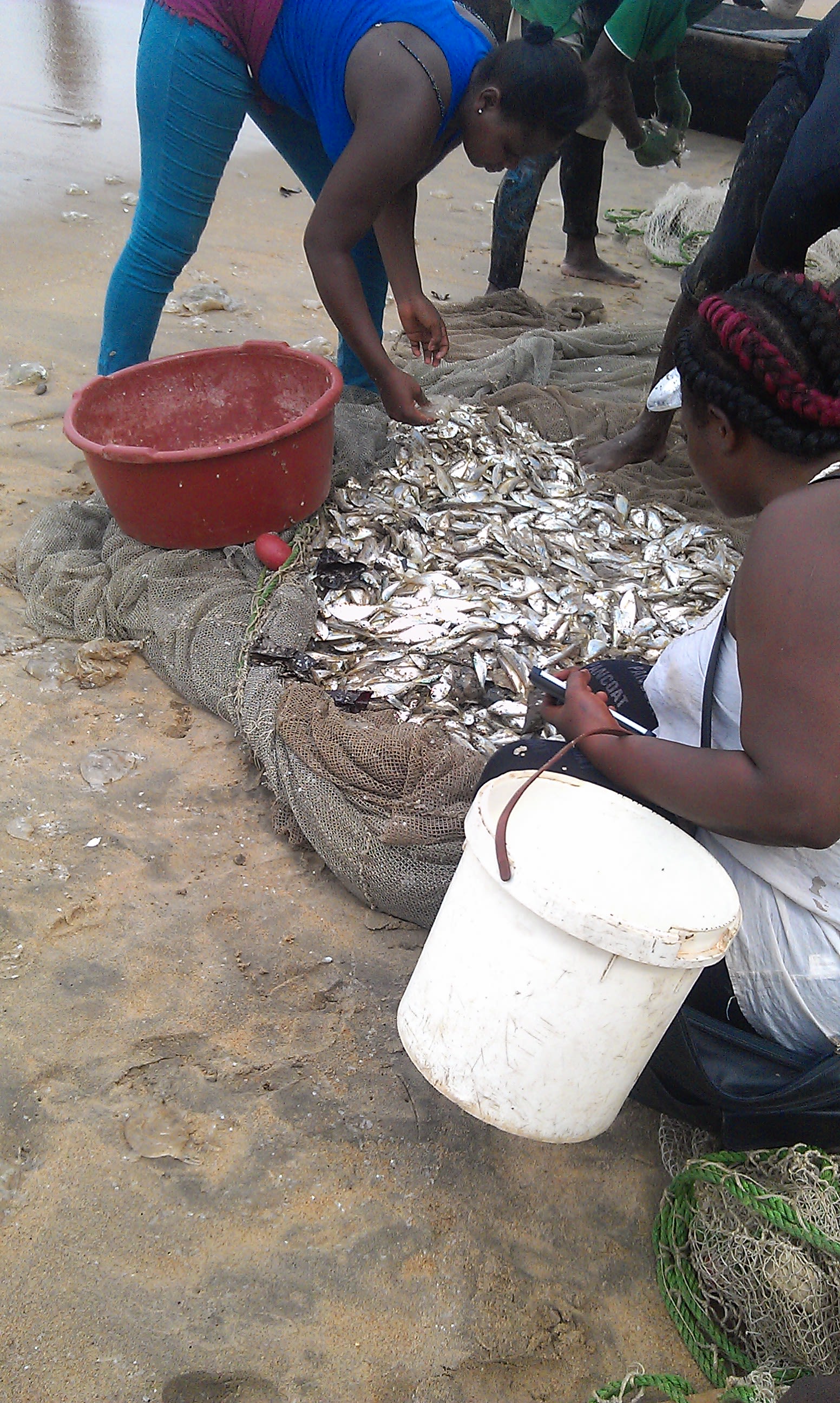
In 2011, as ACBM researchers began to detect an increase in whale populations off of Cameroon’s coast, two humpback whale calves were captured incidentally by artisanal fishers, and subsequently landed and butchered for food.
Fisheries by-catch has been identified as a primary driver of population declines in several species of marine megafauna e.g., marine mammals, sea turtles, as well as seabirds.
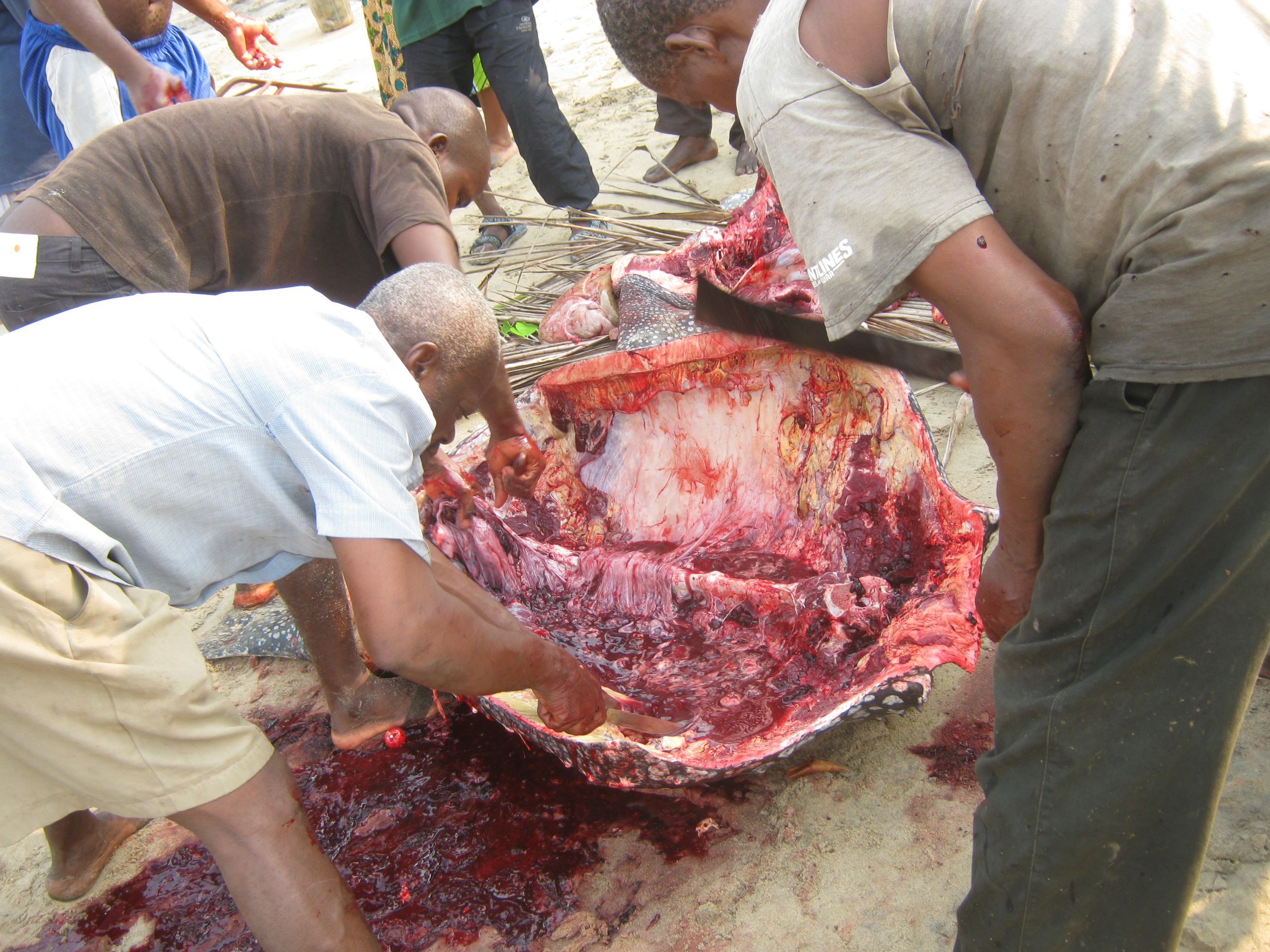
Marine megafauna species are especially vulnerable to by-catch because they occupy broad geographic ranges spanning geopolitical borders, oceanographic regions, and fisheries boundaries.
Within the Cameroonian coastal fisheries, three main marine species are the most frequent victims of by-catch: manatees, dolphins and sea turtles.


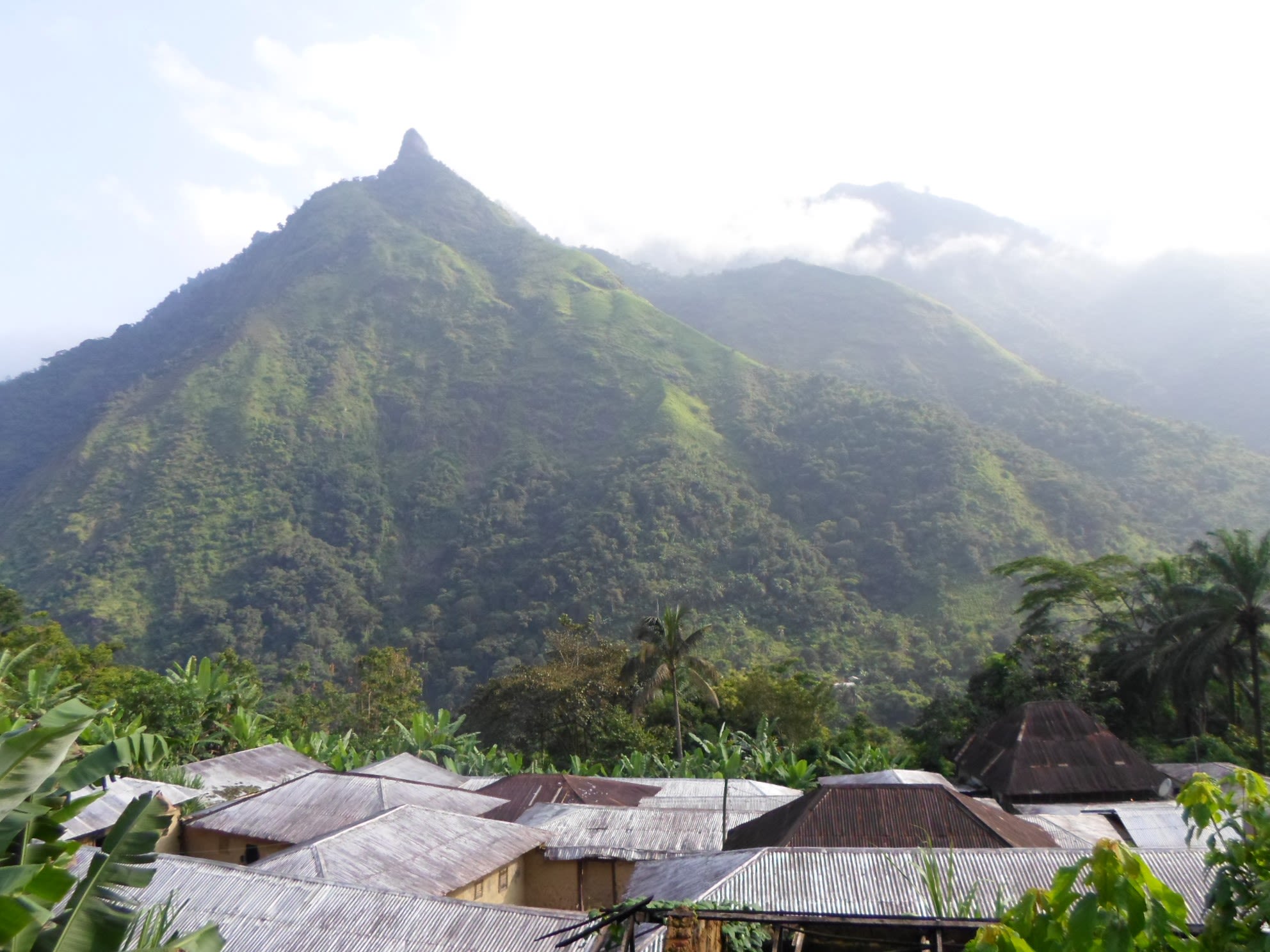
Cameroon’s rich biodiversity and genetic heritage has earned it the nickname ‘Africa in miniature’. Cameroon’s natural resources provide the vital foundations for food security and health in the country.
Cameroon’s rich biodiversity and genetic heritage has earned it the nickname ‘Africa in miniature’. Cameroon’s natural resources provide the vital foundations for food security and health in the country.
Monitoring Matters: Understanding Underpins Protection
Project activities included monitoring of nesting beaches for sea turtles in the area, leading to observations and identifications of 315 sea turtles across various species including Olive Ridley turtles, Leatherback turtles, and Green turtles.
A permanent monitoring programme on the beaches north of Kribi town was inaugurated to complement project activities.
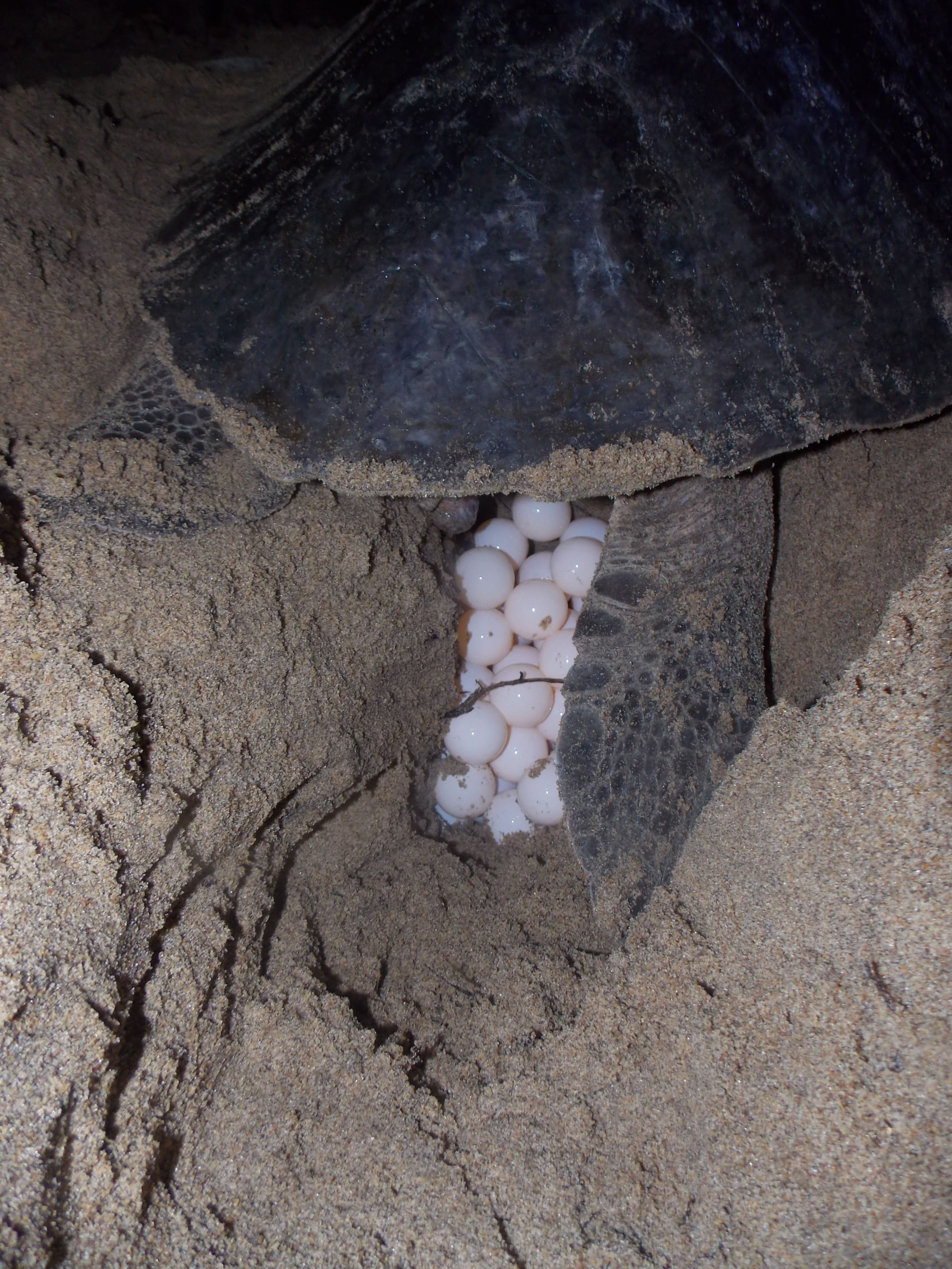
One of the most encouraging results of this monitoring has been the detection of a rise in the number of returning, egg-laying Leatherback and Green turtles, as well as the continued presence of the manatee. Reliable observations of whales may also encourage future eco-tourism opportunities.
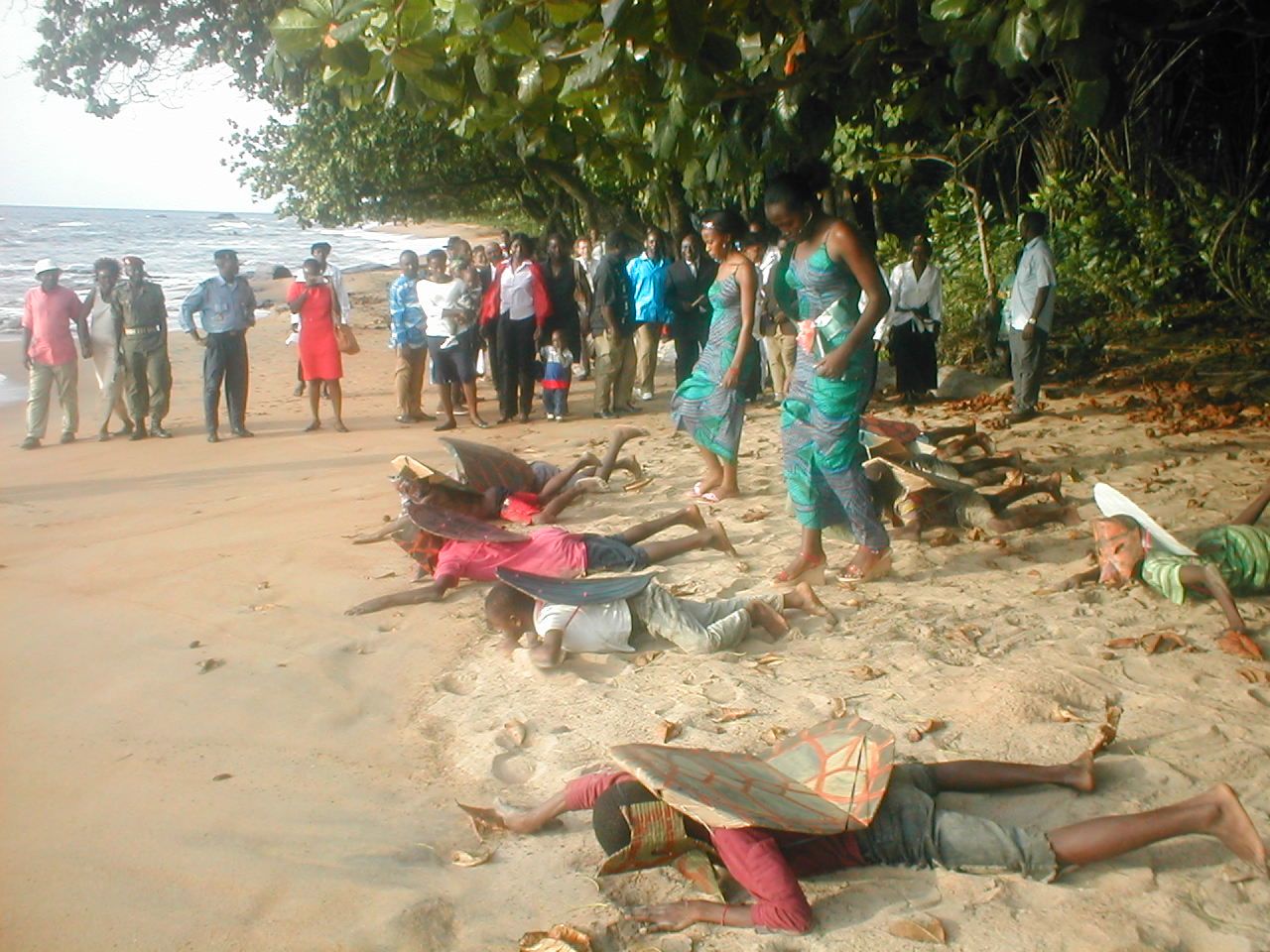
These observational activities are bolstered by transplanting vulnerable sea turtle nests into enclosures in the towns of Lolabé, Eboude Mvaé and Lokoundje.
Transplanting sea turtle nests is a humane alternative to banding individuals. SGP-supported project activities resulted in the transplantation and protection of over 100 nests across the three species of sea turtles.


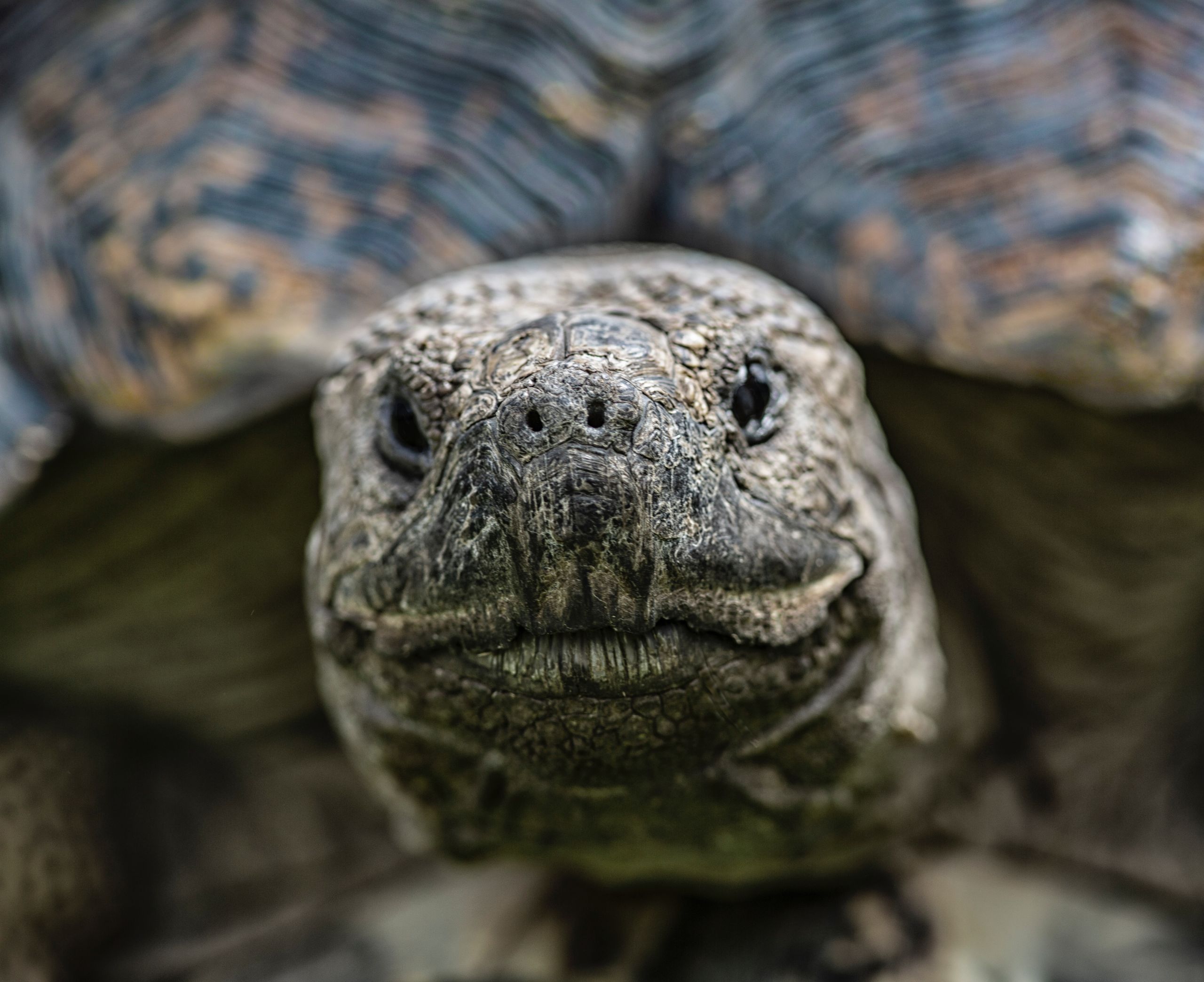
From monitoring to conservation
Findings from the inventory revealed an increase in the number of whales observed along the Cameroon coastline, but also revealed many threats. As a result, efforts have been made to codify a new marine protected area around priority sites.
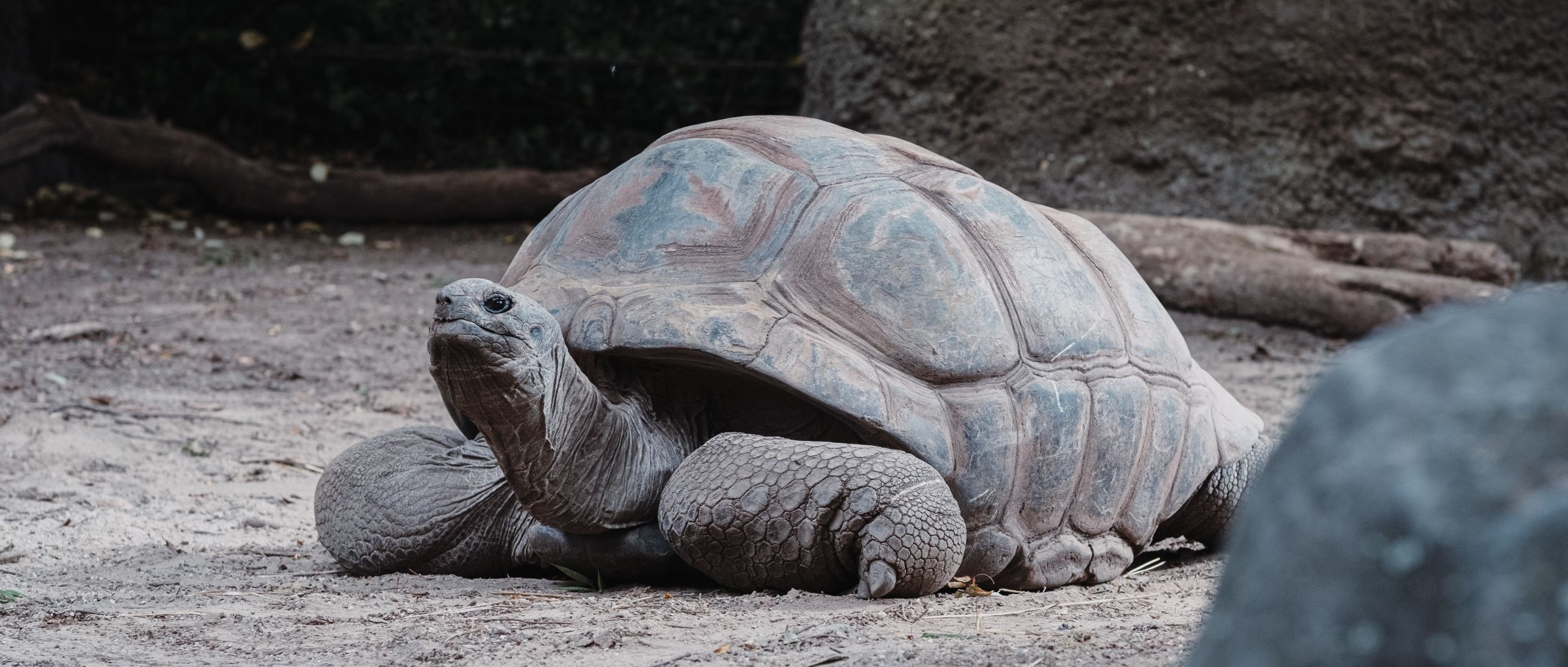
Nominated by ACBM, and in recognition of increasing numbers of Humpback Whale and Stern Whale populations, a ‘Whale Heritage Site’ has been shortlisted by the World Cetacean Alliance In the project area.
The shortlisted site is a transit area for whales coming from the Andean region (Chile and Peru) and going to Mayumba coastal area.
Whale Heritage Site (WHS) status is granted to environments where cetaceans are celebrated; where sustainable practices and livelihoods are continually improved to ensure the health of cetacean habitats; and where respectful coexistence with cetaceans is supported through law, policy, and co-operation.
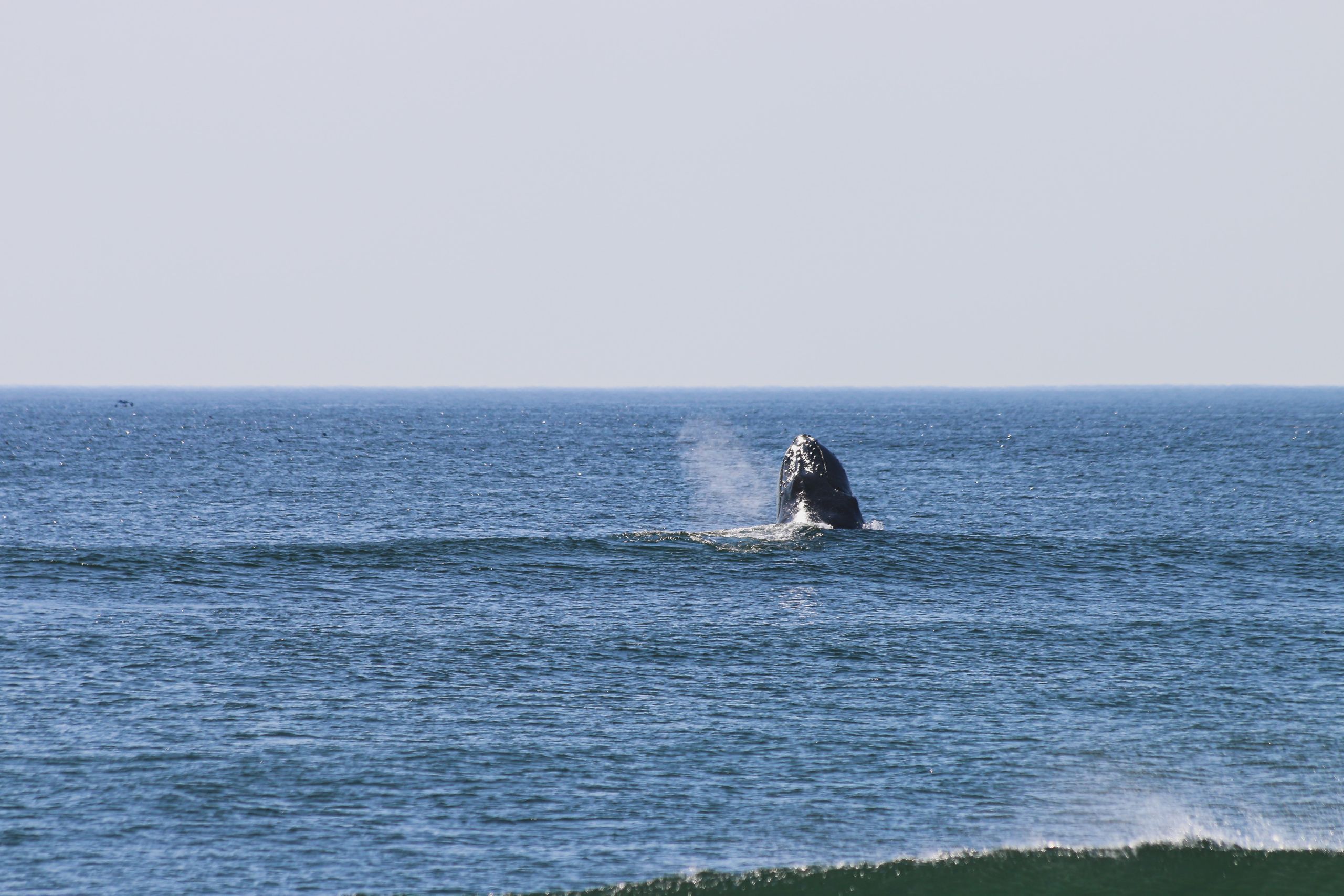
Shortlisted Sites can access support and expertise from the World Cetacean Alliance as they bring together stakeholders, seek further funding, and take steps towards formal recognition.
"The designation of the site as a conservation area will promote artisanal fishing and therefore increase the income of local fishermen, and it will mean that other activities such as nature ecotourism can be developed."

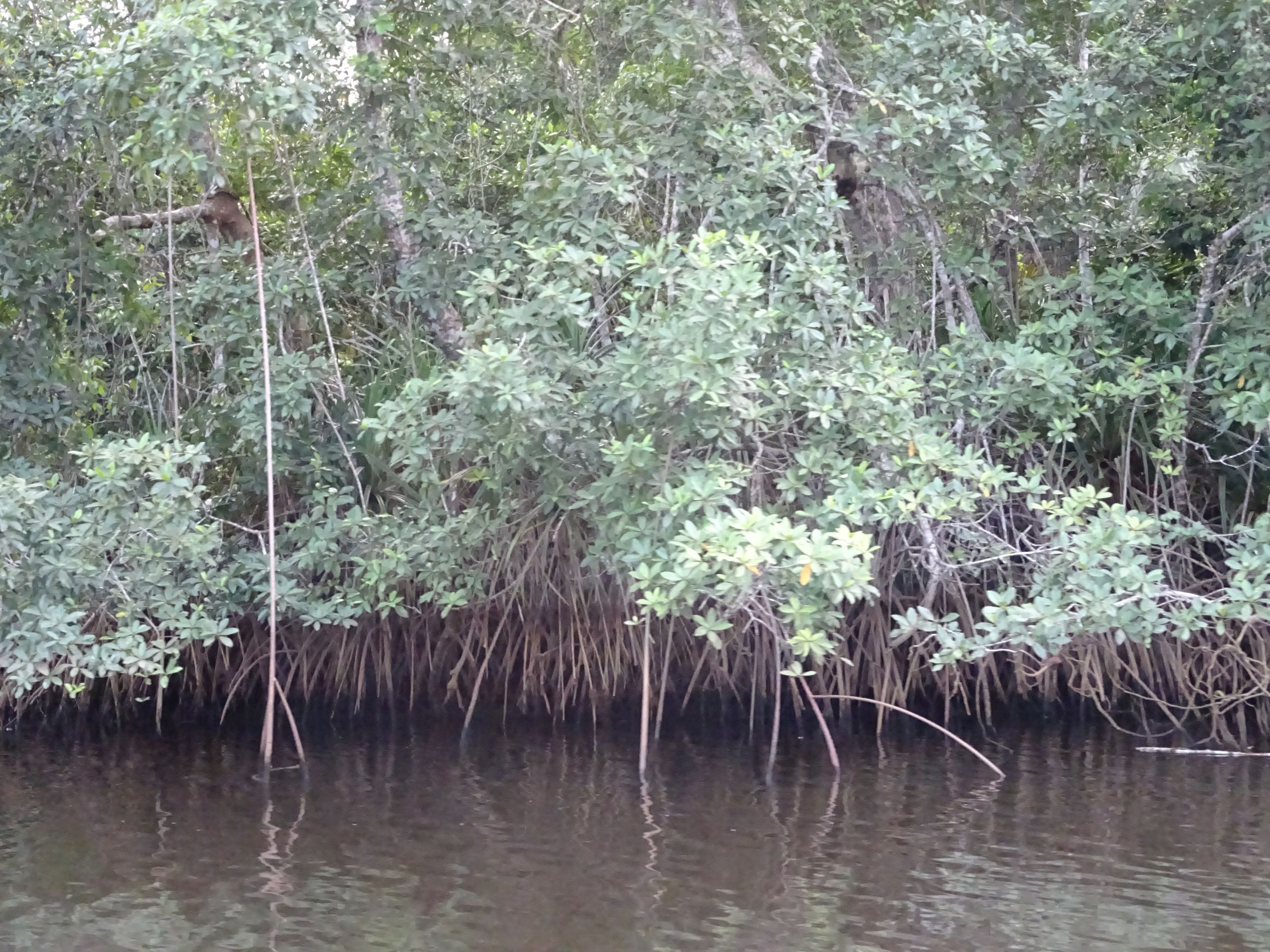

Small Grants, Big Impacts
Since 2005 when SGP grants began in Cameroon, SGP Cameroon has supported over 122 projects to protect biodiversity, address climate change and prevent land degradation.
By providing financial and technical support to projects that conserve the global environment while enhancing people's well-being and livelihoods, SGP demonstrates that through a mix of motivation, creativity, technology, and knowledge, we can find concrete solutions to some of our most pressing social and environmental challenges.
For more information on this specific project, please visit the project profile: Monitoring of sea turtles and the humpback dolphin (Souza teuszii) on the coast of the districts of Edéa and Lokoundjé and involvement of local communities for the establishment of a marine protected area.
For more information on SGP-supported projects in Cameroon, visit the SGP Cameroon Country page.
For more details on the overall Small Grants Programme, click here.
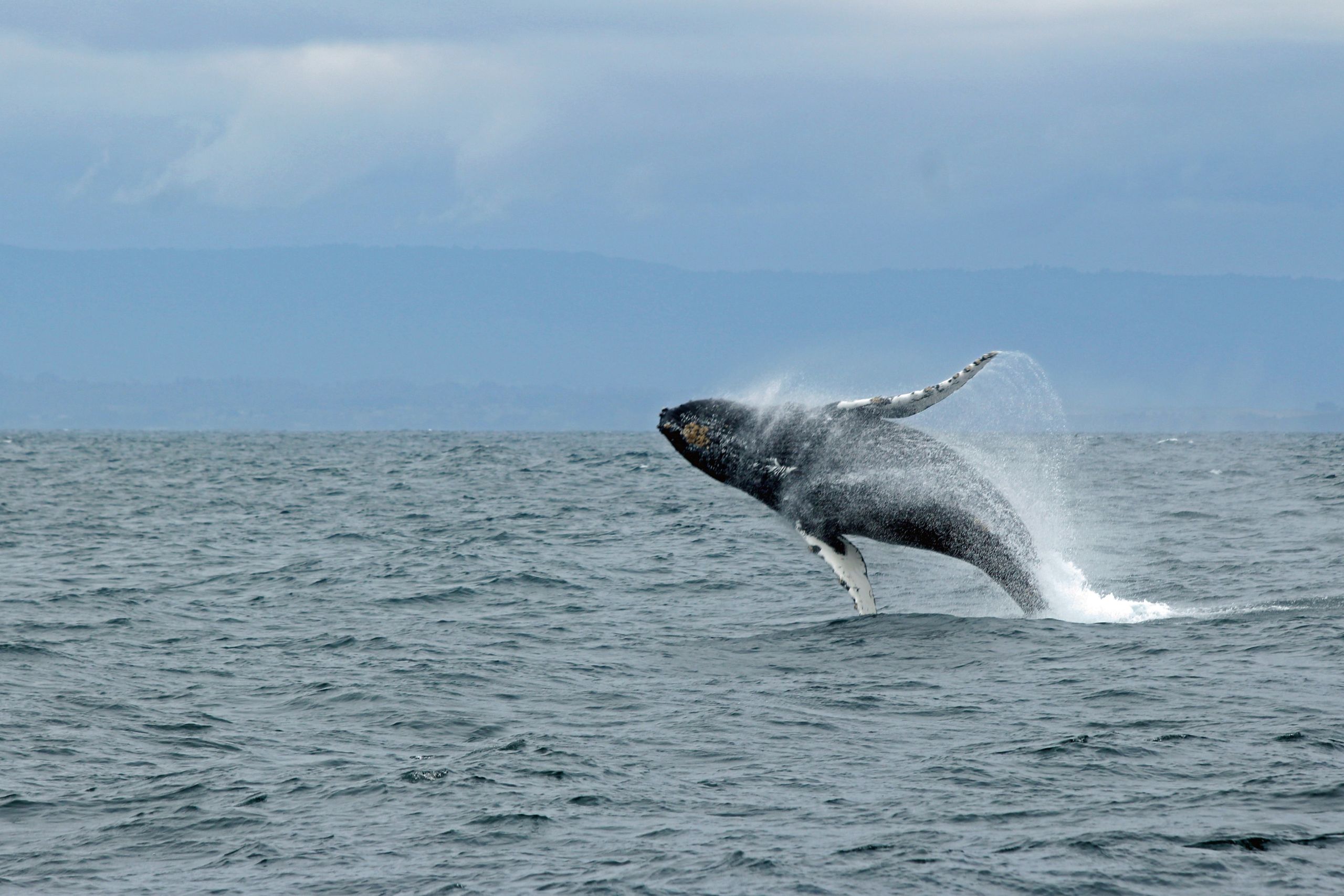

Text by Marie-Laure Mpeck Nyemeck, Aime Kamga Fogue, Isidore Ayissi, Andrea Egan, Ana Maria Currea / Photos: SGP Cameroon and UNDP Cameroon. Additional photos courtesy of NOAA and also Brian Yurasits, Erik Hathaway, Edouard Tamba and Ilse Orsel of UNSplash.
Detailed information drawn from the article: Ayissi I, Makoge RE, Nack J, Nyeck N, Mpeck ML, et al. (2018) Characterization of Marine Artisanal Fisheries and the Impact of By-Catch on Marine Faunal in Southern Cameroon (West-Africa). J Aquac Fisheries 3 : 010.
Location: Cameroon
